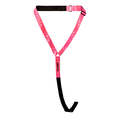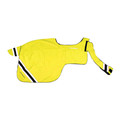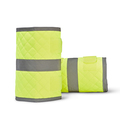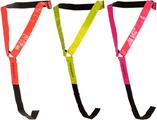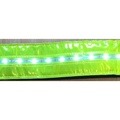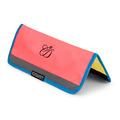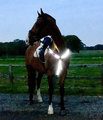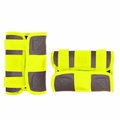Horses are large and powerful flight animals, which makes them (and their riders) amongst the most vulnerable groups of road users. When startled by noise or fast-moving vehicles, a horse may rear up or bolt – the consequences of which can be terrible for horses, riders and motorists.
In the UK, there are roughly 3 million horse riders and many of these use public highways to reach local bridleways or other off-road locations. Whether you live in the countryside or somewhere more suburban, there will come a time when every horse rider is forced to use the roads simply to get where they need to go, or even to exercise their horses due to a lack of bridleways or off-road riding in the area.
The British Horse Society has revealed that more than 2,000 accidents were reported between 2010-2015 - 36 of which involved a rider fatality and 181 which involved the death or euthanasia of a horse. It is worth remembering that these are just reported incidents, and there will be countless others.
We mustn’t forget that both horse riders and motorists are equally responsible for ensuring their safety on the roads, but what can you do, as a horse rider, to minimise your chances of having a road accident or near-miss when riding out this winter (and throughout the year)?
- Remember to always wear your high vis clothing and accessories, no matter what the weather is like or how good visibility is. Make sure your horse is wearing as much reflective gear as you are and can be seen from a good distance. If at all avoidable, try not to head out in darkness, snow, fog or torrential rain, or any other time when visibility is reduced.
- Only use highways if your horse is considered ‘road-safe’ and is accustomed to the sights and sounds of road traffic.
- If possible, get horses used to cars at a young age. This is best done away from the roads, in a safe and secure location, by asking a friend to drive slowly passed the field a few times so your horse comes to see that the car doesn't pose a threat.
- Ensure you have a well-fitted helmet and that all your tack and equipment is in perfect working order.
- Avoid riding two abreast, especially on narrow country roads. If you have to ride side-by-side, return to single file as soon as it is safe to do so.
- Use appropriate hand signals to let motorists know what you are about to do. If you are turning left or right, indicate with the appropriate arm. Extend your arm to the side of you and move it up and down to tell motorists to slow down.
- Always remember to thank motorists when they slow down for you, allow plenty of space when they pass, give you right of way, or have patience to let you manoeuvre. Mutual respect is important on the roads and a simple 'thank you' goes a long way. Hopefully this will encourage motorists to repeat their actions when they next pass a horse and rider on the road.
- Invest in a hat or hack cam and tabard to let motorists know they are being filmed. The idea is that this will increase your safety as drivers will take extra care when passing you. The reflective tabard will also help illuminate you in low light.
As a motorist, remember to always pass 'wide and slow' when you see a horse and rider - leave a car's width between the horse and your car and approach at no more than 15mph - never revv your engine or press the horn, and always have patience and overtake only when there is time and space to do so.
If you have any comments on this discussion, post them below for our other readers or feel free to email me directly: [email protected]
Written by: Hannah

